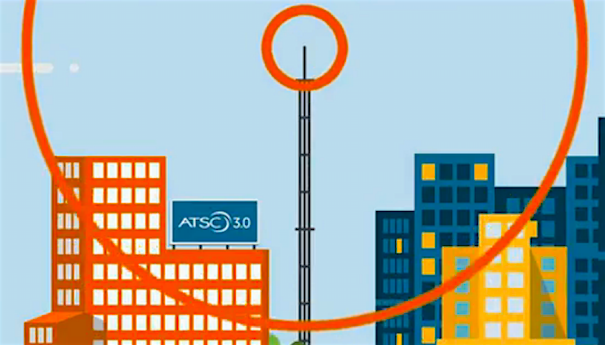Strategic Transformation: ATSC 3.0 as the Bridge Between Broadcasting and AI-Driven Media
Broadcasters possess assets that digital-native platforms lack

The media landscape stands at an inflection point. Traditional broadcasting, built on scheduled linear content delivery, faces disruption from AI-powered platforms that adapt dynamically to individual viewer preferences. Yet this challenge contains within it an unprecedented opportunity.
ATSC 3.0—the "NextGen TV" standard—provides broadcasters with the technical foundation to transform their operations from passive content distributors into intelligent media ecosystems that combine broadcast reliability with digital personalization.

This transformation represents more than technological evolution; it's a fundamental reimagining of how broadcasters connect with audiences. By embracing ATSC 3.0's capabilities alongside artificial intelligence, forward-thinking broadcasters can leverage their unique strengths—trusted local presence, licensed spectrum, and community relationships—to create hybrid services that neither pure broadcast nor streaming platforms can match.
The Shift from Content-Centric to Data-Centric Media
Understanding this transformation begins with recognizing how fundamentally the media ecosystem has changed. Traditional broadcasting operated on educated guesswork about audience preferences, relying on delayed measurements that provided snapshots weeks after content aired.
Today's leading media platforms generate continuous streams of behavioral data from smart TVs, mobile devices, and connected services, creating real-time understanding of what viewers want, when they want it, and how they engage with content.
This data abundance enables three critical capabilities that define modern media success:
First, context-aware delivery adapts content presentation based on time of day, location, device type, and even environmental factors like ambient noise levels.
The professional video industry's #1 source for news, trends and product and tech information. Sign up below.
Second, predictive personalization uses machine learning to anticipate viewer preferences before they're explicitly expressed, surfacing relevant content proactively.
Third, dynamic optimization continuously adjusts everything from content recommendations to advertising placement based on real-time performance data.
For traditional broadcasters, this represents both existential threat and transformational opportunity. Linear television schedules cannot compete with platforms that dynamically adjust to individual preferences.
However, broadcasters possess assets that digital-native platforms lack: trusted local relationships, guaranteed spectrum access, and public service obligations that differentiate them in an era of growing concern about algorithmic accountability.
ATSC 3.0: The Technical Foundation for Intelligent Broadcasting
ATSC 3.0 provides the infrastructure that makes broadcaster transformation possible. Think of it as creating a bridge between the broadcast world's strengths and the digital world's capabilities. The standard's IP-based delivery system seamlessly blends over-the-air transmission with broadband connectivity, enabling hybrid services that combine broadcast reliability with internet-delivered personalization.
The technology's two-way communication capabilities transform television from a passive medium into an interactive platform. Viewers can provide real-time feedback, participate in local discussions, and access personalized content overlays while maintaining the shared viewing experience that distinguishes broadcast from streaming. Rich metadata support gives AI systems the structured information they need to power sophisticated recommendations, while modular service architecture allows broadcasters to move beyond rigid channel lineups to dynamic content offerings.
AI transforms ATSC 3.0's technical capabilities into viewer value through sophisticated intelligence applied at every level of the media experience."
Perhaps most importantly, ATSC 3.0 turns broadcast infrastructure into smart media hubs. Instead of simply transmitting predetermined schedules, broadcasters can deliver targeted content, interactive services, and even non-media applications such as broadcast positioning system (BPS) and spectrum repurposing for communication networks. This flexibility positions broadcasters to generate revenue beyond traditional advertising while serving their communities in new ways.
Artificial Intelligence as the Cognitive Layer
AI transforms ATSC 3.0's technical capabilities into viewer value through sophisticated intelligence applied at every level of the media experience. Predictive analytics forecast audience preferences with remarkable accuracy, enabling broadcasters to optimize scheduling, promotional campaigns, and advertising placements in real time. Advanced personalization engines adjust content presentation based on individual viewing patterns, device capabilities, and contextual factors.
Future implementations will incorporate even more sophisticated technologies. Computer vision systems may analyze on-screen content to automatically generate metadata and enable precise content targeting. Attention tracking through technologies like eye-tracking could further refine content delivery, ensuring that promotional messages and interactive elements appear when viewers are most receptive.
However, this technological power demands careful ethical implementation. Broadcasters must avoid "black box" algorithms that obscure decision-making processes, instead implementing transparent systems that viewers can understand and trust. They must balance personalization with content diversity to prevent filter bubbles that narrow rather than expand viewer perspectives. Regular algorithmic audits become essential to ensure fair and unbiased recommendations that serve diverse community interests.
Strategic Implementation: Building the Modern Broadcaster
Successfully navigating this transformation requires comprehensive modernization across multiple dimensions. Infrastructure upgrades to ATSC 3.0 transmission capabilities form the essential foundation, but implementation must be strategic rather than rushed. Market-by-market deployment should prioritize areas with strong advertiser demand and technically sophisticated audiences who can demonstrate the technology's value.
Cloud-based content management systems provide the scalability needed to handle massive data flows while integrating seamlessly with AI tools. These systems must connect with robust API ecosystems that enable integration with external data sources, from weather services to traffic systems to social media platforms. The goal is creating a unified intelligence layer that informs content decisions across all touchpoints.
Developing first-party data strategies becomes crucial as privacy regulations tighten and third-party cookies disappear. Broadcasters must build direct relationships with audiences through authenticated services that provide value in exchange for data sharing. This might include personalized local news feeds, community discussion platforms, or exclusive content access that encourages viewers to create accounts and engage regularly.
Cross-platform analytics provide the unified view of viewer engagement that modern media requires. Understanding how audiences move between television, mobile apps, and digital platforms enables more sophisticated content strategies and more effective advertising campaigns.
Innovative Revenue Models and Strategic Partnerships
The most successful broadcasters will differentiate themselves through innovative service models that leverage their unique position in the media ecosystem. Hybrid revenue strategies can combine traditional advertising with subscription offerings for premium content and innovative uses of broadcast spectrum for datacasting services unrelated to traditional media.
Partnerships with municipalities position broadcasters as essential smart city infrastructure providers. Beyond traditional emergency alerts, broadcasters can deliver real-time transportation updates, air quality information, public health messaging, and community event notifications. These services create additional revenue streams while reinforcing broadcasters' role as essential community resources.
Strategic collaborations with device manufacturers ensure that new televisions, mobile devices, and connected home systems fully support ATSC 3.0 features. Partnerships with AI specialists accelerate the deployment of intelligent systems without requiring broadcasters to develop complex technologies in-house.
Leveraging Unique Competitive Advantages
Broadcasters enter this transformation with assets that digital-native platforms cannot easily replicate. Deep community roots provide trust and local relevance that global streaming services struggle to match. Licensed spectrum guarantees bandwidth for mass delivery even during peak usage periods when internet networks become congested.
Public service obligations, often viewed as regulatory burdens, actually provide strategic differentiation in an era of growing concern about media accountability and algorithmic transparency. Broadcasters' commitment to serving diverse community interests contrasts favorably with platforms optimized primarily for engagement and advertising revenue.
The existing emergency alert infrastructure, enhanced by ATSC 3.0's capabilities, ensures broadcasters remain indispensable for public safety communications. This role becomes even more critical as extreme weather events and other emergencies require sophisticated, targeted messaging capabilities.
The Imperative for Action
The convergence of ATSC 3.0 and artificial intelligence represents both opportunity and imperative. This transformation window is finite, and the competitive dynamics of media evolution penalize late adopters severely. Organizations that act decisively to modernize infrastructure, develop data capabilities, implement ethical AI frameworks, and forge strategic partnerships will define the next era of broadcasting.
Success requires more than technical upgrades—it demands reimagining the broadcaster's relationship with audiences and communities. The most successful organizations will view ATSC 3.0 not as a transmission standard upgrade but as the foundation for becoming intelligent media platforms that serve communities in ways no other medium can match.
The timeline for this transition is accelerating. Broadcasters who recognize this moment's strategic importance and act accordingly will emerge as leaders in the intelligent media era. Those who delay risk not just competitive disadvantage but potential irrelevance in a rapidly evolving landscape where audience expectations and technological capabilities advance daily.
The future belongs to broadcasters who understand that ATSC 3.0 represents their bridge to the AI-driven media world—a bridge they must cross decisively to remain essential in their communities' media ecosystem.

Ling Ling Sun is Vice President of Technology for Maryland Public Television and former CTO at Nebraska Public Media from 2014 to 2025.
A respected industry leader, Sun serves as a director on the ATSC Board and is an active member of the NAB Television Technology Committee. Her commitment to public broadcasting is evidenced by her two consecutive terms chairing the PBS Engineering Technology Advisory Committee (ETAC) from 2013 to 2018, alongside her service on the PBS Interconnection Committee. Sun further demonstrated her leadership by heading the NAB Broadcast Engineering & Information Technology (BEIT) Conference Program Committee in both 2023 and 2024. Additionally, she has contributed her expertise to the Technical Panel of the Nebraska Information Technology Commission.
